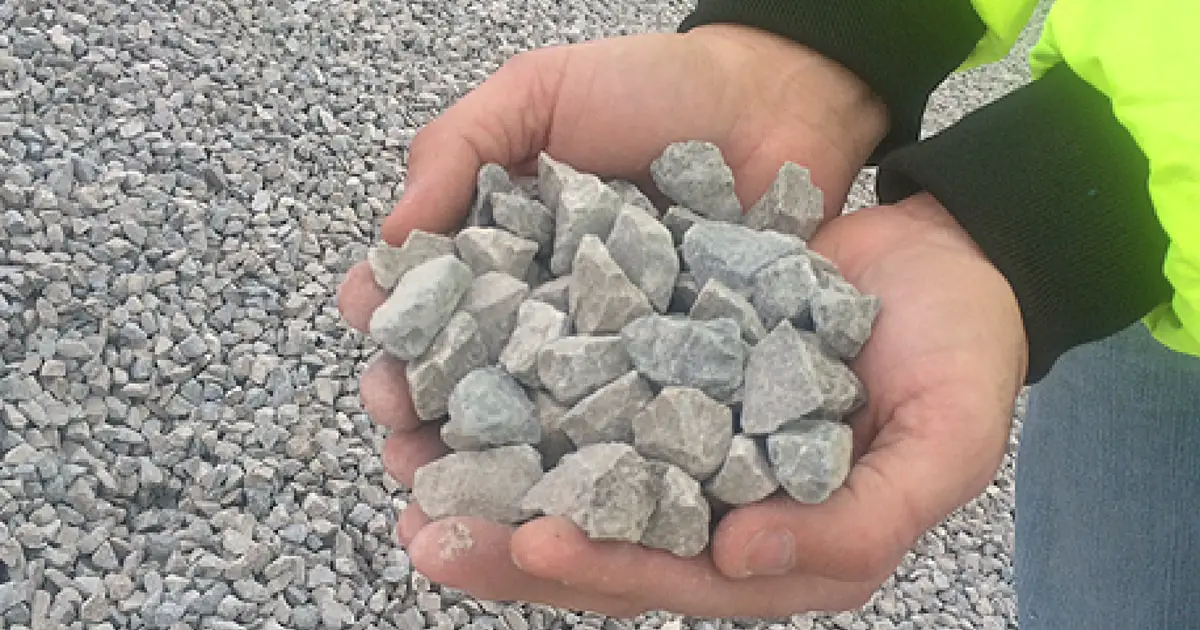The selection of building materials is essential for structural design, that is why you need to have an optimum crushing and screening company at your disposal for all your aggregates. Traditionally, construction materials are metallic and non-metallic. Metallic materials such as plain carbon steel compare favorably with the rest of the materials in terms of cost per unit weight. Steel is a versatile material. It is available in a wide range of structural forms having great reproducible properties. Its attractive characteristics make it popular as a construction material.
Non-metallic construction materials are primarily brick, stone, concrete, stone, and wood. The following materials have some complex composite microstructures. We have several crushing and screening companies for construction materials. Some of this will be aggregate materials, well you can find more about aggregates here. They are not easily characterized but can actively affect their behavior during service. For instance, the stone is homogenous and the properties of two samples can considerably vary. The particular feature requires a high factor of safety for design along with low impact strength. To provide resistance against crushing, the stone has good compressive strength. For paving and firebricks for fireplaces, we use clay products and bricks.
Wood is cheaper, easily shaped, and lighter. However, it’s subject to attack by certain insects like termites, decaying and easily flammable. Concrete is a mixture of gravel and crushed stones by the use of a mortar. The most expensive ingredient is cement. With proper proportioning of the water, cement, and aggregates, it’s possible to save considerably. You produce the concrete that fulfills the requirements needed. These requirements can be strength, abrasion resistance, water tightness, and durability. Concrete becomes stronger when it is subjected to compression rather than tension.
For a good concrete mix, these aggregates need to be hard and clean. They should have strong particles free to absorb chemicals and coatings of clay and fine materials. These fine materials could easily cause deterioration of concrete with time. Aggregate can be divided into two categories; fine and coarse.
Fine aggregates consist of crushed stone and sand whose particles can pass through a 3/8-inch sieve. Coarse aggregates are particles greater than 0.19 inches but range between 3/8 inches and 1.5 inches in their diameter. An example of coarse aggregate is gravel.
Selecting aggregates of good quality for construction provides concrete of higher quality and high economy. For instance, selecting the maximum allowable aggregate size for the mix tend to reduce the cement required. Less cement means less water will be used given that the cement-water ratio is kept constant. This reduces the overall cost. A lower cement-water ratio helps to reduce possible shrinkage. Also, cracking issues may arise as a result of restrained volume change in the concrete.
Consider the following when selecting good-quality aggregates.
Good quality counts.
To know the quality of the aggregates, you can check the history of performance. This tells how well the material has performed.
Look out for aggregates which are;
- Have durable particles.
- Particles that are strong, clean, and hard.
- Particle free from absorbed contaminants, clay coatings, and harmful chemicals.
There are some types of aggregates that you should try to avoid;
- Those with a soft and porous material.
- Powdery aggregates have a chance to split easily.
- Chert materials can cause popouts.
Aggregate size and shape
Particle shapes and the surface texture affects the property of the mixed concrete. The effect is more on the freshly mixed concrete than the hardened. Elongated, angular, and rough-textured particles need more water to produce workable concrete. Smooth, rounded compact aggregates require less water. The flat and elongated particles have a limit of about 15% by weight of the total aggregate. Unit weight is the volume that the graded aggregate and the inside voids occupy in concrete. The amount of cement paste required for the mix depends on the void content between the particles.
In size, coarse aggregates have a size greater than 4.75 mm. The fine aggregates which are crushed stones and sand are less than 9.55mm in diameter. The maximum size to produce coarse aggregates depends on the reinforcement, size, and shape.
Aggregate with good gradation.
Good gradation in aggregates leads to concrete mix with finish ability and good workability. Proportionality of coarse and fine aggregate changes based on characteristics of individual aggregate. Their placement method and the needed finish were also affected.
Excessive fine materials have a high surface area. This facilitates high demand for water resulting in a sticky mix. Excessive coarse materials on the other hand produce a harsh mix. This makes them difficult to consolidate, place and finish. Therefore, the gradation of the aggregates must fall within the stipulated limits.
